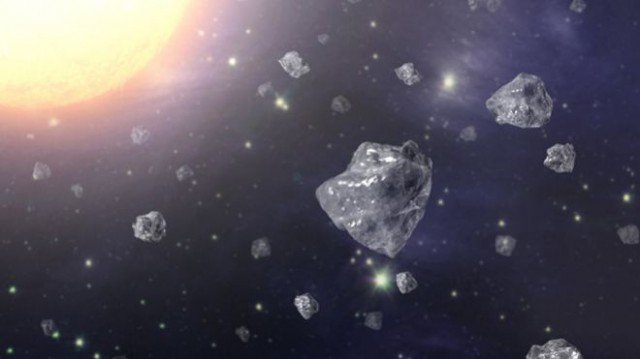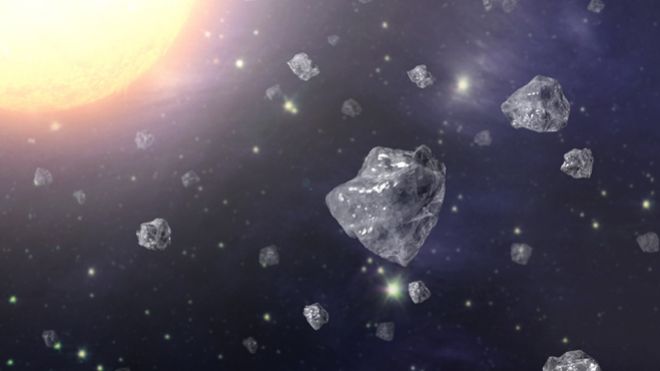According to US scientists, diamonds big enough to be worn by Hollywood film stars could be raining down on Saturn and Jupiter.
New atmospheric data for the gas giants indicates that carbon is abundant in its dazzling crystal form, they say.
Lightning storms turn methane into soot (carbon) which as it falls hardens into chunks of graphite and then diamond.
These diamond “hail stones” eventually melt into a liquid sea in the planets’ hot cores, they told a conference.
The biggest diamonds would likely be about a centimetre in diameter – “big enough to put on a ring, although of course they would be uncut,” says Dr. Kevin Baines, of the University of Wisconsin-Madison and NASA’s Jet Propulsion Laboratory.
Kevin Baines added they would be of a size that the late film actress Elizabeth Taylor would have been “proud to wear”.
“The bottom line is that 1,000 tonnes of diamonds a year are being created on Saturn.
“People ask me – how can you really tell? Because there’s no way you can go and observe it.

“It all boils down to the chemistry. And we think we’re pretty certain.”
Kevin Baines presented his unpublished findings at the annual meeting of the Division for Planetary Sciences of the American Astronomical Society in Denver, Colorado, alongside his co-author Mona Delitsky, from California Speciality Engineering.
Uranus and Neptune have long been thought to harbor gemstones. But Saturn and Jupiter were not thought to have suitable atmospheres.
Kevin Baines and Mona Delitsky analyzed the latest temperature and pressure predictions for the planets’ interiors, as well as new data on how carbon behaves in different conditions.
They concluded that stable crystals of diamond will “hail down over a huge region” of Saturn in particular.
“It all begins in the upper atmosphere, in the thunderstorm alleys, where lightning turns methane into soot,” said Kevin Baines.
“As the soot falls, the pressure on it increases. And after about 1,000 miles it turns to graphite – the sheet-like form of carbon you find in pencils.”
By a depth of 6,000km, these chunks of falling graphite toughen into diamonds – strong and unreactive.
These continue to fall for another 30,000km – “about two-and-a-half Earth-spans” says Kevin Baines.
“Once you get down to those extreme depths, the pressure and temperature is so hellish, there’s no way the diamonds could remain solid.
“It’s very uncertain what happens to carbon down there.”
One possibility is that a “sea” of liquid carbon could form.
“Diamonds aren’t forever on Saturn and Jupiter. But they are on Uranus and Neptune, which are colder at their cores,” says Kevin Baines.
[youtube zQGiuQQD6ec]
